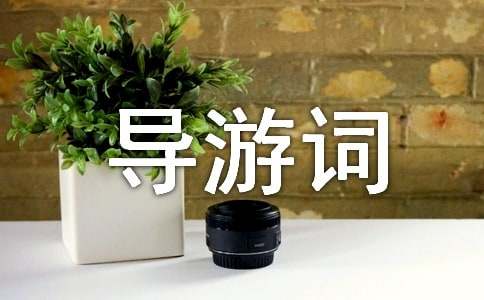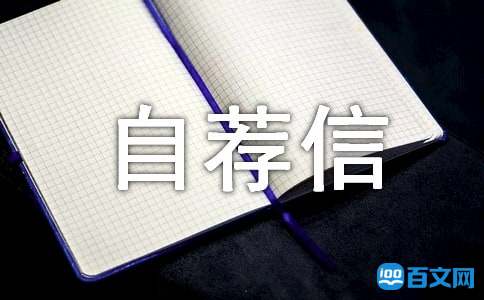北京的英文導游詞
北京的'英文導游詞1The Great Wall, like the Pyramids of Egypt, the Taj Mahal(1) in India and the Hanging Garden of Babylon(2), is one of the great wonders of the world. Starting out in the east on the banks of the Yalu River in Liaoning Province, the Wall stretches westwards for 12,700 kilometers to Jiayuguan in the Gobi desert, thus known as the Ten Thousand Li Wall in China. The Wall climbs up and down, twists and turns along the ridges of the Yanshan and Yinshan Mountain Chains through five provinces-Liaoning, Hebei, Shanxi, Shaanxi, and Gansu--and two autonomous regions--Ningxia and Inner Mongolia, binding the northern China together.

Historical records trace the construction of the origin of the Wall to defensive fortification back to the year 656 B.C. during the reign of King Cheng of the States of Chu. Its construction continued throughout the Warring States period in the fifth Century B.C. when ducal states Yan, Zhao, Wei, and Qin were frequently plundered by the nomadic peoples living north of the Yinshan and Yanshan mountain ranges. Walls, then, were built separately by these ducal states to ward off such harassments. Later in 221 B.C., when Qin conquered the other states and unified China, Emperor Qinshihuang ordered the connection of these individual walls and further extensions to form the basis of the present great wall. As a matter of fact, a separate outer wall was constructed north of the Yinshan range in the Han Dynasty(206 BC--1644 BC.), which went to ruin through years of neglect. In the many intervening centuries, succeeding dynasties rebuilt parts of the Wall. The most extensive reinforcements and renovations were carried out in the Ming Dynasty (1368--1644) when altogether 18 lengthy stretches were reinforced with bricks and rocks. it is mostly the Ming Dynasty Wall that visitors see today. The Great Wall is divided into two sections, the east and west, with Shanxi Province as the dividing line. The west part is a rammed earth construction, about 5.3 meters high on average. In the eastern part, the core of the Wall is rammed earth as well, but the outer shell is reinforced with bricks and rocks. The most imposing and best preserved sections of the Great Wall are at Badaling and Mutianyu, not far from Beijing and both are open to visitors. The Wall of those sections is 7.8 meters high and 6.5 meters wide at its base, narrowing to 5.8 meters on the ramparts, wide enough for five horses to gallop abreast. There are ramparts, embrasures, peep-holes and apertures for archers on the top, besides gutters with gargoyles to drain rain-water off the parapet walk. Two-storied watch-towers are built at approximately 400-meters internals. The top stories of the watch-tower were designed for observing enemy movements, while the first was used for storing grain, fodder, military equipment and gunpowder as well as for quartering garrison soldiers. The highest watch-tower at Badaling standing on a hill-top, is reached only after a steep climb, like "climbing a ladder to heaven". The view from the top is rewarding, hoverer. The Wall follows the contour of mountains that rise one behind the other until they finally fade and merge with distant haze. A signal system formerly existed that served to cnmunicate military information to the dynastic capital. This consisted of beacon towers on the Wall itself and on mountain tops within sight of the Wall. At the approach of enemy troops, smoke signals gave the alarm from the beacon towers in the daytime and bonfire did this at night.
Emergency signals could be relayed to the capital from distant places within a few hour long before the invention of anything like modern cnmunications. There stand 14 major passes (Guan, in Chinese) at places of strategic importance along the Great Wall, the most important being Shanghaiguan and Jiayuguan. Yet the most impressive one is Juyongguan, about 50 kilometers northwest of Beijing. Known as "Tian Xia Di YI Guan" (The First Pass Under Heaven), Shanghaiguan Pass is situated between two sheer cliffs forming a neck connecting north China with the northeast. It had been, therefore, a key junction contested by all strategists and many famous battles were fought here. It was the gate of Shanghaiguan that the Ming general Wu Sangui opened to the Manchu army to suppress the peasant rebellion led by Li Zicheng and so surrendered the whole Ming empire to the Manchus, leading to the foundation of the Qing Dynasty. (1644-1911) Jiayuguan Pass was not so much as the "Strategic pass Under the Heaven" as an important cnmunication center in Chinese history. Cleft between the snow-capped Qilian Mountains and the rolling Mazong Mountains, it was on the ancient Silk Road. Zhang Qian, the first envoy of Emperor Wu Di of the Western Han dynasty (206 B.C-24 A.D), crossed it on his journey to the western regions. Later, silk flowed to the west through this pass too. The gate-tower of Jiayuguan is an attractive building of excellent workmanship. It has an inner city and an outer city, the former square in shape and surrounded by a wall 11.7 meters high and 730 meters in circumference. It has two gates, an eastern one and a western one. On each gate sits a tower facing each other. the four corners of the wall are occupied by four watch towers, one for each. Juyongguan, a gateway to ancient Beijing from Inner Mongolia, was built in a 15-kilometer long ravine flanked by mountains. The cavalrymen of Genghis Khan swept through it in the 13th century. At the center of the pass is a white marble platform named the Cloud terrace, which was called the Crossing-Street Dagoba, since its narrow arch spanned the main street of the pass and on the top of the terrace there used to be three stone dagobas, built in the Yuan Daynasty(1206-1368). At the bottom of the terrace is a half-octagonal arch gateway, interesting for its wealth of detail: it is decorated with splendid images of Buddha and four celestial guardians carved on the walls. The vividness of their expressions is matched by the exquisite workmanship. such grandiose relics works, with several stones pieced together, are rarely seen in ancient Chinese carving. The gate jambs bear a multi-lingual Buddhist sutra, carved some 600 years ago in Sanskrit(3), Tibetan, Mongolian, Uigur(4), Han Chinese and the language of Western Xia. Undoubtedly, they are valuable to the study of Buddhism and ancient languages. As a cultural heritage, the Wall belongs not only to China but to the world. The Venice charter says: "Historical and cultural architecture not only includes the individual architectural works, but also the urban or rural environment that witnessed certain civilizations, significant social developments or historical events." The Great Wall is the largest of such historical and cultural architecture, and that is why it continues to be so attractive to people all over the world. In 1987, the Wall was listed by UNESCO as a world cultural heritage site.
北京的英文導游詞2The tour will take 4-6 hours. The route is as follows:
Out side the East Gate-side the East Gate –in front of the Hall of benevolence and Longevity- in front of Garden of Virtuous Harmony-in front of the Grand Theater Building- a lakeside walk from the Garden of Virtuous Harmony to the Hall o Jade Ripples- in front of the o Jade Ripples- in front of the Yiyunguan (Chamber of Mortal Being)-Hall of happiness and longevity- in front of the Yaoyue (Chamber of Mortal Beings)-Hall of Happiness and Longevity-in front of the Yaoyue(Inviting the Moon ) Gate of the Long Corridor- strolling along the Long Corridor- visiting an exhibition of cultural relics- in front of the Hall of Dispelling Clouds- inside the Hall of Dispelling Clouds- atop the Tower of Buddhist Incense- on a hilltop leading from the back door of the Tower of Buddhist Incense- on a hilltop leading from the back door of the Tower of Buddhist Incense- inside the Garden of Harmonious Interest –outside the south gate to Suzhou Shopping Street- atop the stone bridge inside the Suzhou shopping street –on the road from the south gate of suzhou shopping street- on the road form the south gate of suzhou shopping street to the marble boat- in front of the ruins of the Garden of cnplete spring –along the lakeside by the marble boat-boating on the Kunming Lake-leaving out through the East Gate.
(Out side the east gate)
Ladies and Gentlemen: Welcne to the Summer Palace. (After the self-introduction of the guide -interpreter) I hope this will be an interesting and enjoyable day for you .
During our tour, you will be introduced to time honored historical and cultural traditions, as well as picturesque views and landscapes.
The construction of the Summer Palace first started in 1750. At that time, the Qing Dynasty was in its heyday and China was a powerful Asian country with vast territories. The monarch in power then was Emperor Qianlong. With supreme power and large sums of money, he summoned skillful and ingenious artisans from all over the country to carry out this construction work in honor of his mother `s birthday. After 15 years and one seventh of the nation` s annual revenue spent, the Garden of Clear Ripples was cnpleted and served as a testimony to China` s scientific and technological achievements. In 1860, this vast royal garden was burnt down along with the Yuanming Yuan (Garden of Perfection and Brightness) by Angol-French allied forces. In 1888, Empress Dowager Cixi reconstructed the garden on the same site and renamed it the Garden of Nurtured Harmony (Summer Palace). Characterized by its vast scope and rich cultural embodiments, the Summer Palace has becne one of the most famous tourist sites in the world.
This is the main entrance to the Summer Palace-the East Gate On top of the eaves of the door there is a plaque bearing a Chinese inscription which means “Garden of Nurtured Harmony” , whose calligrapher was Emperor Guangxu. The gate that you are now entering was used exclusively by the emperor, the empress and the queer mother. All others used the side doors.
(Inside the East Gate)
the Summer Palace can be divided into two parts: Longevity Hill and Kunming Lake .The whole garden covers an area of 290 hectares, of whih three- fourths consists of a lake and rivers .This imperial garden features 3,000 room-units and covers an expanse of 70,000 square meters with more than 100 picturesque spots of interest. The layout of the Summer Palace includes three groups of architectures: palaces where the emperor attended to state affairs, resting palaces of the emperor and empress, and sightseeing areas. Entering the East Gate we will cne the the office quarters. Entering the East gate we will cne to the office quarters. The annex halls on both sides were used for officials on duty.
This is the Gate of Benevolence and Longevity. Above the door there is a plaque bearing the same name in both Chinese and Manchurian characters. The gigantic rock in the foreground is known as Taihu rock, or eroded limestone, quarried in Jiangsu Province and placed here to decorated the garden.
北京的英文導游詞3Tian’anmen Rostrum
Tian’anmen( the Gate of Heavenly Peace), is located in the center of Beijing. It was first built in 1417 and named Chengtianmen( the Gate of Heavenly Succession). At the end of the Ming Dynasty, it was seriously damaged by war. When it was rebuilt under the Qing in 1651, it was renamed Tian’anmen, and served as the main entrance to the Imperial City, the administrative and residential quarters for court officials and retainers. The southern sections of the Imperial City wall still stand on both sides of the Gate. The tower at the top of the gate is nine-room wide and five –room deep. According to the Book of Changes, the two numbers nine and five, when cnbined, symbolize the supreme status of a sovereign.During the Ming and Qing dynasties, Tian’anmen was the place where state ceremonies took place. The most important one of them was the issuing of imperial edicts, which followed these steps:
1) The Minister of Rites would receive the edict in Taihedian( Hall of Supreme Harmony), where the Emperor was holding his court. The minister would then carry the decree on a yunpan( tray of cloud), and withdraw from the hall via Taihemen( Gate of supreme Harmony)
2) The Minister would put the tray in a miniature longting( dragon pavilion). Beneath a yellow umbrella and carry it via Wumen( Meridian Gate), to Tian’anmen Gate tower.
3) A courtier would be invested to proclaim the edict. The civil and military officials lining both sides of the gateway beneath the tower would prostrate themselves in the direction of the emperor in waiting for the decree to the proclaimed.
4) The courtier would then put the edict in a phoenix-shaped wooden box and lower it from the tower by means of a silk cord. The document would finally be carried in a similar tray of cloud under a yellow umbrella to the Ministry of Rites.
5) The edict, copied on yellow paper, would be made known to the whole country.
Such a process was historically recorded as “ Imperial Edict Issued by Golden Phoenix”.During the Ming and Qing dynasties Tian’anmen was the most important passage. It was this gate that the Emperor and his retinue would go through on their way to the altars for ritual and religious activities.
On the Westside of Tian’anmen stands ZhongshanPark( Dr. Sun Yat-sen’s Park), and on the east side, the Working People’s Cultural Palave. The Park was formerly called Shejitan( Altar of Land and Grain), built in 1420 for offering sacrificial items to the God of Land. It was opened to the public as a park in 1914 and its name was changed in 1928 to the present one in memory of the great pioneer of the Chinese Democratic Revolution.The Working People’s Cultural Palace used to be Taimiao( the Supreme Ancestral Temple), where tablets of the deceased dynastic rulers were kept.
The stream in front of Tian’anmen is called Waijinshuihe( Outer Golden River),with seven marble bridges spanning over it . Of these seven bridges,historical records say the middle one was for the exclusive use of the emperor and was accordingly called Yuluqiao( Imperial Bridge). The bridges flanking it on either side were meant for the members of the royal family and were therefore called Wanggongqiao( Royal’s Bridges). Farther away on each side of the two were bridges for officials ranking above the third order and were named Pinjiqiao( ministerial Bridges). The remaining two bridges were for the use by the retinue below the third order and wre called Gongshengqiao( cnmon Bridges). They anr the one in front of the Supreme Ancestral Temple to the east and the one in front of the Altar of land and Grain to the west.
The two stone lions by the Gate of Tian’anmen, one on each side were meant as sentries. They gaze toward the middle axis, guarding the emperor’s walkway. In front of the gate stands a pair of marble columns called Huabiao. They are elaborately cut in bas-relief following the pattern of a legendary dragon. Behind the gate stands another pair of similar columns. The story of Huabiao may be traced to a couple of sources. One of the versions accredits its invention to one of the Chinese sage kings named Yao, who was said to have set up a wooden pillar in order to allow the ordinary people to expose evil-doers, hence it was originally called a slander pillar. Later it ws reduced to a signpost, and now it serves as an ornament.
北京的英文導游詞4Peking Man was discovered in Zhoukoudian village, on the Longgu Mountain, Fangshan district, Beijing, which was listed as a world cultural heritage site in 1987. In the 1920s archaeologists discovered a complete skull of an ape-man dating back 600,000 years which was later named as Peking Man. Stone tools and evidence of Peking Man’s use of fire were later found on the mountain. Studies have shown that Peking Man walked on his feet and lived 690,000 years ago. His society lived in groups in caves and survived by hunting. The group could make use of rough stone tools and knew how to use fire for heating and cooking.
The discovery included six complete skulls of Peking Man, 12 skull fragments, 15 mandibles(1), 157 teeth and some sections of broken femur(2), shinbone(3), and upper arm bones belonging to more than 40 individuals of different ages and sexes. In addition 100,000 fragments of stone tools were found together with sites used for fire and burnt bones and stones.
Peking Man created a unique Old Stone Culture which had much influence to the Old Stone Culture of north China. Stone tools are the principal relics of this remote culture. Also discovered in Zhoukoudian are stone points, a new production tool then, and bone articles made and used by Peking Man. Found in the caves were such tools as the larger end of an antler that had been used as a hammer and the sharp end of an antler used as a digging tool. The use of fire was a milestone of the development of civilization and the discovery of Peking Man has pushed back the time that man first used it by tens of thousands of years. The largest ash pile discovered in the caves is six meters thick. Fire allowed people to eat cooked food instead of raw food and promoted the development of the brain and improved health. With his rough tools and simple living conditions Peking man created a unique and very ancient culture.
Included in the UNESCO(4) world heritage list in 1987.
北京的英文導游詞5The tour will take 4-6 hours. The route is as follows:
Out side the East Gate-side the East Gate –in front of the Hall of benevolence and Longevity- in front of Garden of Virtuous Harmony-in front of the Grand Theater Building- a lakeside walk from the Garden of Virtuous Harmony to the Hall o Jade Ripples- in front of the o Jade Ripples- in front of the Yiyunguan (Chamber of Mortal Being)-Hall of happiness and longevity- in front of the Yaoyue (Chamber of Mortal Beings)-Hall of Happiness and Longevity-in front of the Yaoyue(Inviting the Moon ) Gate of the Long Corridor- strolling along the Long Corridor- visiting an exhibition of cultural relics- in front of the Hall of Dispelling Clouds- inside the Hall of Dispelling Clouds- atop the Tower of Buddhist Incense- on a hilltop leading from the back door of the Tower of Buddhist Incense- on a hilltop leading from the back door of the Tower of Buddhist Incense- inside the Garden of Harmonious Interest –outside the south gate to Suzhou Shopping Street- atop the stone bridge inside the Suzhou shopping street –on the road from the south gate of suzhou shopping street- on the road form the south gate of suzhou shopping street to the marble boat- in front of the ruins of the Garden of complete spring –along the lakeside by the marble boat-boating on the Kunming Lake-leaving out through the East Gate.
(Out side the east gate)
Ladies and Gentlemen: Welcome to the Summer Palace. (After the self-introduction of the guide -interpreter) I hope this will be an interesting and enjoyable day for you .
During our tour, you will be introduced to time honored historical and cultural traditions, as well as picturesque views and landscapes.
The construction of the Summer Palace first started in 1750. At that time, the Qing Dynasty was in its heyday and China was a powerful Asian country with vast territories. The monarch in power then was Emperor Qianlong. With supreme power and large sums of money, he summoned skillful and ingenious artisans from all over the country to carry out this construction work in honor of his mother `s birthday. After 15 years and one seventh of the nation` s annual revenue spent, the Garden of Clear Ripples was completed and served as a testimony to China` s scientific and technological achievements. In 1860, this vast royal garden was burnt down along with the Yuanming Yuan (Garden of Perfection and Brightness) by Angol-French allied forces. In 1888, Empress Dowager Cixi reconstructed the garden on the same site and renamed it the Garden of Nurtured Harmony (Summer Palace). Characterized by its vast scope and rich cultural embodiments, the Summer Palace has become one of the most famous tourist sites in the world.
This is the main entrance to the Summer Palace-the East Gate On top of the eaves of the door there is a plaque bearing a Chinese inscription which means “Garden of Nurtured Harmony” , whose calligrapher was Emperor Guangxu. The gate that you are now entering was used exclusively by the emperor, the empress and the queer mother. All others used the side doors.
(Inside the East Gate)
the Summer Palace can be divided into two parts: Longevity Hill and Kunming Lake .The whole garden covers an area of 290 hectares, of whih three- fourths consists of a lake and rivers .This imperial garden features 3,000 room-units and covers an expanse of 70,000 square meters with more than 100 picturesque spots of interest. The layout of the Summer Palace includes three groups of architectures: palaces where the emperor attended to state affairs, resting palaces of the emperor and empress, and sightseeing areas. Entering the East Gate we will come the the office quarters. Entering the East gate we will come to the office quarters. The annex halls on both sides were used for officials on duty.
This is the Gate of Benevolence and Longevity. Above the door there is a plaque bearing the same name in both Chinese and Manchurian characters. The gigantic rock in the foreground is known as Taihu rock, or eroded limestone, quarried in Jiangsu Province and placed here to decorated the garden.
On the marble terrace sits a bronze mythical beast, known as Qilin or Xuanni . It was said to the one of the nine sons of Dragon King. A point of peculiar interest is that it has the head of a dragon, antlers of a deer, the tail of a lion and hooves of a ox, and is covered with a unique skin. IT was considered an auspicious creature that brought peace and prosperity.
This grand hall is the Hall of Benevolence and Longevity. It was built in 1750 , and was known as the Hall of Industrious Government. Emperor Qianlong ruled that the halls where monarchs attended to state affairs would be named after them . After the rebuilding of the Summer Palace, the hall was renamed, suggesting that benevolent rulers would enjoy long lives.
The arrangement of the hall has been left untouched. In the middle of the hall stands a throne made of sandalwood and carved with beautiful designs. In the background there is a screen carved with nine frolicking dragons. On either side of the throne there are two big fans made of peacock feathers, two column-shaped incense burners, crane-shaped lanterns and an incense burner assuming the form of Luduan, a mythological animal which was suppose to have the power to prevent fire. The small chambers on eight side were where the Emperor Qianlong and Empress Dowager Cixi rested and met officials on formal occasions.
On the verandah in the foreground of the hall there are bronze statues of dragon and phoenixes which served as incense burners on major occasions. They are hollow and smoke comes through holes on their backs. Also on the veranda are Tai Ping (Peace) bronze water vats made during the reign of Emperor Qianlong. As a precaution in case of fire, a fire was lit underneath the vats in the winter to keep the water in them from freezing.
(At the entrance of Garden of Virtuous Harmony)
we are now visiting the Garden of Virtuous Harmony, where Emperor Qianlong and Empress Dowager Cixi were entertained with Beijing Opera performances. IT mainly consists of the Dressing House, The Grand Theater Building and the Hall of pleasure smiles. The grand Theater Building known as the “Cradle of Beijing Opera” was uniquely laid out and magnificently decorated. On September 10, 1984, the Garden of Virtuous Harmony opened its doors to visitors. There are also 7 exhibition halls with articles of daily use on display here. The staff here put up court dresses of Qing Dynasty in order to give the visitor a more vivid impression.
(In front of the Grand Theater Building)
this building is 21 meters in height and 17 meters in width and features three tiers of tilted eaves and stages. All of the stages are connected to a raise ,and a winch is installed at the top. A well and 5 ponds were sunk under the ground stage. There are trapdoors in the ceiling for fairies to descend, as well as on the floor for demons to surface. The underground passages also served as a means of improving resonance and making the performers` voices more audible .Of the three main theater building of the Qing Dynasty, the Grand Theater Building is the tallest and the largest. The other two are Changyin (Fluent Voice ) Pavilion in Chengde, an imperial summer resort. The building played a major part in fostering the birth and development of Beijing opera: since the completion of the Grand Theater Building, many performances were held in it in honor of the Empress Dowager Cixi.
(A lakeside walk from the Garden of Virtuous Harmony to the Hall of Jade Ripples)
we are now standing in the middle of a rockery behind the Hall of Benevolent and longevity. It appears that there` s nothing special ahead. However, after we clear the rockery, we will reach Kunming Lake. This is a application of a specific style of Chinese gardening.
Not far away in the lake there is a islet. It is filled with peach and weeping willow trees and serves as a ideal place to appreciate the scenery. The pavilion on the islet is called Zhichun (Understanding Spring) Pavilion and is chardcterized by four- edged, multiple eaved roofs.
(In front of the Hall of Jade Ripples)
this group of special and quiet courtyard dwelling is the Hall of jade Ripples. It was first used by Emperor Qianlong to attend to state affairs. IT was also where Emperor Guangxu of the late Qing dynasty was kept under house arrest.
This hall is a hallmark of the Reform Movement of 1898, Emperor Guanxu was Empress Dowager Cixi` s nephew. After Emperor Tongzhi died, Empress Dowager Cixi made her nephew, who was at that time four years old a successor in order to continue her wielding of power behind the scenes. When Emperor Guanxu was 19 years old ,Empress Dowager Cixi relinquished power to him but continued to exert considerable influence. In 1898, the Reform Movement took place with the aim of sustaining the corn principles of the Qing Dynasty while reforming outdated laws. The movement lasted for 103 days until it was suppressed by Empress Dowager Cixi. The emperor` s six earnest reformists were beheaded and Emperor Guangxu was placed under house arrest which lasted for 10 years .All the back doors were sealed and a brick was was put up behind the wooden partition on each side of the two annexes of the courtyard. Emperor Guangxu was closely watched by eunuchs. The wall remains intact for tourists to see.. Dynasty while reforming outdated laws. The movement lasted for 103 days until it was suppressed by Empress Dowager Cixi. The emperor` s six earnest reformists were beheaded and Emperor Guangxu was placed under house arrest which lasted for 10 years .All the back doors were sealed and a brick was was put up behind the wooden partition on each side of the two annexes of the courtyard. Emperor Guangxu was closely watched by eunuchs. The wall remains intact for tourists to see.
(In front of Yiyunguan (Chamber of Mortal Beings)
this was where Empress and empress dowager of China` s feudal system. However, Emperor Guanxu was not the last emperor of the Qing Dynasty. The last in the line was Emperor Puyi, who ascended the throne in 1908 at the age of three, too young to be married . In 1912, he was forced to abdicate. During the short reign of Emperor Puyi. Empress Longyu handled state affairs on his behalf in the name of Empress Dowager. In 1911, a revolution led by Dr. Sun Yat-sun succeeded, and the year after, Empress Longyu announced the abdication of the last emperor of China.
(In the Hall of Happiness and Longevity)
the aged empress Dowager Cixi was so fond of the Summer Palace that she decided to live here from April through October of every year. This group of buildings served as her residence.
This group of courtyard dwellings consists of a forecourt and a backyard with annex courts on each side .The whole compound was basically made of wood, which is ideal for ventilation and lighting . With its quiet and tasteful layout, the Hall of Happiness and Longevity made life very easy and convenient. No wonder one of Empress Dowager Cixi` s pleasure boat. On the pier there is a tall lantern post. Flanking the staircase leading to the main entrance of the hall, there are bronze cranes, deer and vases, symbolizing universal peace. The interior layout is the same as the imperial court, with throne, a large table and incense burners placed in the middle. At mealtime, eunuchs-in –waiting would make a gigantic table out of this table and Empress Dowager Cixi would dine on 128 courses. Because of this more than 1,800 tales of silver would be spent each month on meals. On the east side of the Living Room is the Cloak Room. The bedroom in on its west.
In front of the yaoyue (Inviting the Moon ) Gate of the Long Corridor
The famed Long Corridor is ahead. Facing Kunming lake and in the foreground of Longevity Hill, the Long Corridor stretches from Yaoyue (Inviting the Moon ) Gate to Shizhang (Stony Old Man) Pavilion. IT is 728 meters in length and consist of 273 sections and connects four octagonal pavilions. In 1990 ,it was listed in Guinness Book of World Records.
(Strolling along the Long Corridor)
The Long Corridor is one of the major structures of the Summer Palace .Since the corridor was designed to follow the physical features of the southern slope of Longevity Hill , four multiple-eaved, octagonal pavilions (Beauty-Retaining Pavilion, Enjoy-the Ripples Pavilion, Autumn Water Pavilion and Clarity Distance Pavilion) were placed at bends and undulation. Thus sightseers will hardly notice the rise and fall of the terrain. As a major part of the architectural style of the Summer Palace, the Long Corridor serves as an ingenious connector between the Lake and the hill. Scattered buildings on the southern slope were linked to creat a unified complex.
This corridor can also be called a “corridor of paintings ”: There are more than 14,000 paintings on its beams. Some of them are of birds, flowers and landscapes of the West lake in Hangzhou, Zhejian Province. Others present scenes from literary classics. The majority of the landscape painting were done under the order of Emperor Qianlong, who preperred the scenery of South China.
(By the door leading to the exhibition of cultural relics)
this group of temple-shaped structures are known as Qinghua (Clarified China) Hall ,also known as Arhat Hall during the reign of Emperor Qianlong. The original hall burned down in 1860. After it was reconstructed, it was renamed.
Qinghua Hall is now used as a exhibition hall displaying rare cultural relics collected in the Summer Palace. The hall consists of 6 exhibition rooms with tens of thousands of articles of treasure on display in turn. Among the exhibits there are bronze ware, porcelain, jade assemblages from the Ming and Qing dynasties, and rare and paintings. There is also a gigantic stone slab, which is more than 3 meters in height and width. It bears the handwritten inscriptions of Emperor Qianlong is commemoration of the suppression of a rebellion in the Xinjiang region. Only this slab survived when the Angle-French allied forces set fire to the Summer Palace.
(In front of the Gate of Dispelling Clouds)
Now we are approaching the central part of the structures on the lakeside slope, the Tower of Buddhist Incense within the Hall of Dispelling Clouds. The Hall of Dispelling Clouds was where numerous palatines kowtowed to Empress Dowager Cixi. It was surrounded by galleries and flanked by annex halls. In the forecourt there is a pool and marble bridges . Starting from the lakeside, there lies in succession a memorial archway, the Gate of Dispelling Clouds, the Hall of Dispelling Clouds and the Tower of Buddhist Incense. All of these structures are built on a central axis and each is taller than its predecessor. This was designed to give prominence to the last structure, the Tower of Buddhist Incense, which was a symbol of imperial power. The layout of this group of architectures was based on scenes described in Buddhist sutras. This group of structure are among the most magnificently constructed here in the Summer Palace.
(Inside the Hall of Dispelling Clouds)
The original buildings on this site were burned down by the Anglo-French allied forces in 1860. A new set of structures was built during the reign of Emperor Guanxu, and was called the Hall of Dispelling Clouds, suggesting that it was a fairyland.
The hall was built on a high terrace, and has 21 room. Inside the hall are a throne, screens, tripods and mandarin fans. On a platform you will see bronze dragons, phoenixes and tripods. At the foot of the platform there are four bronze water vats, the ancient form of fire extinguishers.
The 10th day of lunar October was ,Empress Dowager Cixi` s birthday. On that day ,she sat on the throne here to receive congratulations and gifts.
Now we are going to pay a visit to the highlight of the Summer Palace- the Tower of Buddhist Incense. What we are now standing on is a stone terrace which is 20 meters in height. It has a semi housed stairway of 100 steps, you will live for 100 years. So, let` s go !
(In the front of the Tower of Buddhist Incense)
An octagonal structure with three storeys and quadruple eaves, the Tower of Buddhist Incense is the very center of the Summer Palace, and is one of the masterpieces of ancient Chinese architecture. The tower is 41 meters in height, and is buttressed by 8 solid pillars made of lignumvitae logs. With its complex structure, ingenious layout, towering terrace and convincing grandeur, the Tower of Buddhist Incense was artfully set out by the imperial gardens and beautiful scenery surrounding it .The Tower overlooks Kunming Lake and other picturesque spots within an area of tens of kilometers .On the west side of the Tower stands Baoyunge (Precious Cloud Pavilion). IT is made of bronze and is7.5 meters in height and 270 tons in weight. It resembles its wooden counterparts in every detail. It is one of the largest and most exquisite bronze pavilions still on existence in China. Lamas prayed here during the reign of Emperor Qianlong in honor of the monarchs and their families. At the turn of the century 10 bronze windows were spirited abroad. In 1992 an American company bought the windows and returned them intact to China.
(On a hilltop leading from the back door of Tower of Buddhist Incense)
Now we can see the long and snaking Western Causeway and a shorter dike that divides Kunming Lake into three areas that contain South Lake Island, Seaweed-viewing Island and circle city island. The three island represent three mountain in ancient Chinese mythology, i. e. penglai, Fangzhang and Yingzhou. This peculiar method of incorporating a lake a three mountains within a single garden was a brainchild of Emperor Wudi of the Han Dynasty more than 2,000 years ago, bearing testimony to feudal monarchs` s longing for longevity. As the legend goes many heavenly elixirs grew on the three mythical islands. Using artificial building techniques, the ancient Chinese built this masterpiece based on the myth to make the mythical on appear to be accessible to humans.
(Inside the Garden of Harmonious Interest)
Setting a garden within a larger garden has been one of China traditional architectural styles. The Garden of Harmonious Interest serves as a fine example of this.
This Garden was built under the order of Emperor Qianlong and modeled after the Jichang Garden (Garden of Ease of Mind )at the foot of Mount Huishan, Jiansu Province. IT was renamed by his son Emperor Jiaqing in 1811. The existing Garden was rebuilt by Emperor or Guangxu. Empress Dowager Cixi used to go fishing here. The Garden features 10 waterfront platforms, pavilions and halls as well as hundreds of galleries
With all of its structures facing the lake and pools, the Garden of Harmonious Interest is basically a garden of waterscape. Spanning the vast expanse of the lake and pools are five bridges, each quite different from the others. The most famous of them is the bridge known as “Knowing –the Fishing-bridge.” IT is said that more than 2,500 years ago during the Warring States Period, two philosophere named Zhuang Zi had an interesting argument by the side of a pond.
Zhang said, ”Fish swim to and fro in the water. What happy fish!”
Hui asked , ”You are not a fish. How do you know they are happy? ”
Zhuang replied, “You are not me .How do you know I don’t know? ”
Hui signed, “I am not you ,therefore, I don’t know you . And you are not a fish ,so how
do you know that fish are happy? ”
Zhang said, “you ask me how I know fish are happy, why do you keeping me the same question?”
Although The Garden of Harmonious Interest was designed after Jichang Garden, it not only absorbed the original designs, but exceeded it .
(Outside the south entrance to Suzhou Shopping Street)
Now lets have a look at longevity Hill. On the back slope of the Hill stands a group of architectures. The centerpiece of structures there are known as the Four Continents and are dedicated to Buddhism. This group was laid out and arranged in accordance with Buddhist cosmology. Aside from a main shrine and structures embodying the Four Continents, there are eight towers representing Minor Continents. The shrine is surrounded by four Lamaist pagodas and between the major and minor continents, there two platforms representing the sun and the moon.
The Qing authority attached great importance to Buddhism. To further strengthen ties with the ethnic minorities who practiced Buddhism, the monarchs incorporated both Han and Tibetan styles of architecture into this group of temples.
Further north at the foot of the Four Major Continent lies the Suzhou Shopping Street. Built along the Back Lake of the Summer Palace, this street stretches about 300 meters and features more than 60 stores. It includes restaurants, teahouses, pawnshops banks, drugstores dye houses and publishing houses. In order to recreate the atmosphere of ancient times, visitors will have the chance to exchange their money to ancient style Chinese coins for use here. Storefronts are trimmed with traditional signboards and ornaments. The commercial culture of the mid-18th century has thus been recreated.
(Atop the stone bridge inside the Suzhou Shopping Street)
visitors may be surprise to see that this shopping street is almost the same as that in South China. As a matter of fact, this street was designed after the shops along the canals in Suhzhou. Originally known as Emperor` s Shopping Street, it was built during the reign of Emperor Qianlong. After making several inspection tours to South China and being duly impressed by its commercial prosperity, Emperor Qianlong ordered the construction of this street.
The imperial shopping street was burnt down by Anglo-French allied forces in 1860. The site remained desolated until 1987, when reconstruction began. It was opened to the public in September 1990.
With commercial culture as its hallmark, the Suzhou Shopping Street is a vivid representation of China` s traditional cultures.
(On the road from the south fate of the suzhou shopping street to the marble boat)
This is the hall of Pines. From it to the west we can walk to the Marble Boat. The path we aree taking stretches between Longevity Hill and Back Lake. Monarchs and their cohorts used to stroll along it .Hence it was named Central Imperial Path. Along this path you will see lilacs all around. Hence, this road is also known as the Path of Lilac.
(In front of the ruins of the Garden of complete spring)
Quite a few unique structures were burnt down during the reign of emperor Qianlong, among which the Garden of Complete Spring was one of the most famous. The ruined and desolate courtyard by the roadside was its original site, it remains to be restored.
This group of structures cover an area of 4,000 square meters and features a number of halls built on three different levels. All of the structures were connected with galleries and stone staircases. With its natural and ingenious combination of pavilions, a hall, galleries and rooms, the Garden of Complete Spring serves as a fine model for other gardens.
Emperor Qianlong frequently visited this compound.
(Along the lakeside by the Marble Boat)
Now we have returned from the back of Longevity Hill to the front. There is the famous Marble Boat. This structure is 36 meters in length and its body was made of marble. On top of it is a two storeyed structure. The floor was paved with colored bricks. All of the windows are inlaid with multi-colored glass and the ceiling was decorated with carved bricks. The drainage system channels rain water down through four hollow concrete pillars and into the lake through the mouth of dragon heads.
According to a book written by Emperor Qianlong, the boat was used for enjoying the scenery and was supposed to be symbolic of the stability of the Qing Dynasty.
Halfway up the slope there stands the Hall for listening to Orioles . The ancient Chinese liken the warble of an oriole to beautiful songs and melodies, hence the name of the hall which used to be a theater. Now the hall is one of the most famous restaurants in China, featuring imperial dishes and desserts. It is a must for many foreign visitors to have lunch here when then come to Beijing. More than one hundred heads of state worldwide have dined here and the late Premier Zhou Enlai has held banquets here in honor of state guests. (Sightseers who want to try the restaurant can go boating after they eat. Those who do not can go abroad right away. Those who do not feel like taking the boat can stoll along the Long Corridor to the outside of the East Gate).
(Boating on Kunmin Lake)
we are now going to enjoy the lakeside scenery from a pleasure boat.
As a main part of the Summer Palace, Kunming Lake covers an area of 220 hectares, or three fourths of the combined space of this summer resort. This natural lake is more than 3500 years old.
This lake was originally called Wengshan Lake. In 1749 Emperor Qianlong ordered the construction of Qingyi Garden, the predecessor of the Summer Palace. Involving nearly 10,000 laborers, the lake was expanded and turned into a peach-shaped reservoir, the first of its kind for Beijing.
From 1990 to 1991, the Beijing Municipal Government ordered the first dredging of the lake in 240 years .Involving 200,000 men and hundreds of dredgers and other tools, a total of 625,600 cubic meters of sludge was dredged and 205 bombs dropped by the Japanese during the Anti-Japanese War were removed.
The summer palace set a precedent for sightseeing by boat. There used to be a large imperial flotilla, of which the “Kunming Merry Dragon” was the most famous. It was destroyed by the Anglo-French allied forces in 1860. To make the tour of the Summer Palace a more pleasant one, a large pleasure boat “Tai He ” (Supreme Harmony )was built. This double –decked boat is 37.09 meters long,8,59 meters wide and 10.49 meters high. It can travel at a speed of 9 kilometer per hour. Small pleasure boats are also available to tourist.
Another major spot of interest on the Western causeway is Jingming (Bright View ) Hall. Both its front and rear face the lake. This structure also features three two- storeyed halls of varying heights.
Our tour is drawing to a close as we approach the shore. Today we only visited the major scenic areas of the Summer Palace. I have left other spot of interest for your next visit.
I will show you out through the East Gate. I hope you enjoyed today` s tour. Thank you .Good-bye and good luck.
【北京的英文導游詞】相關文章:
北京英文導游詞(精選8篇)01-25
北京概況英文導游詞景點講解介紹08-04
北京故宮博物院英文導游詞11-05
北京故宮紫禁城英文導游詞景點作文08-04
北京的導游詞01-27
北京“鳥巢”導游詞08-21
北京長城的導游詞08-19
北京故宮導游詞10-21
北京頤和園導游詞11-05
北京天壇導游詞06-16
这里有更多你想看的|
|
- 上一篇:汽車專業自我評價500字 汽車專業自我評價50字
- 下一篇:返回列表






